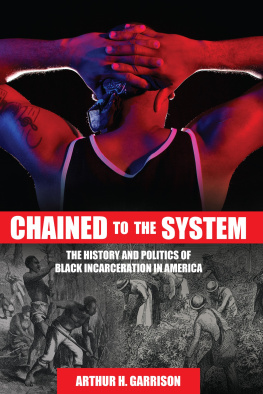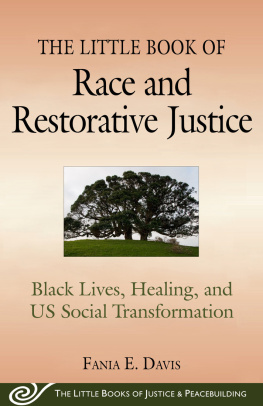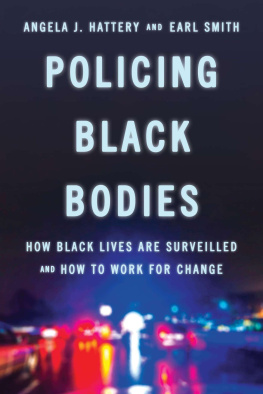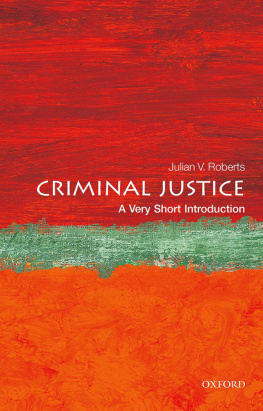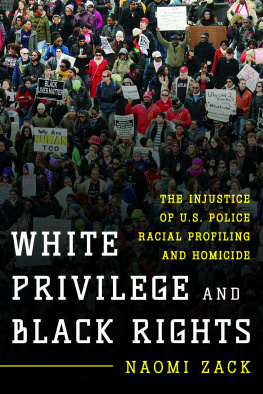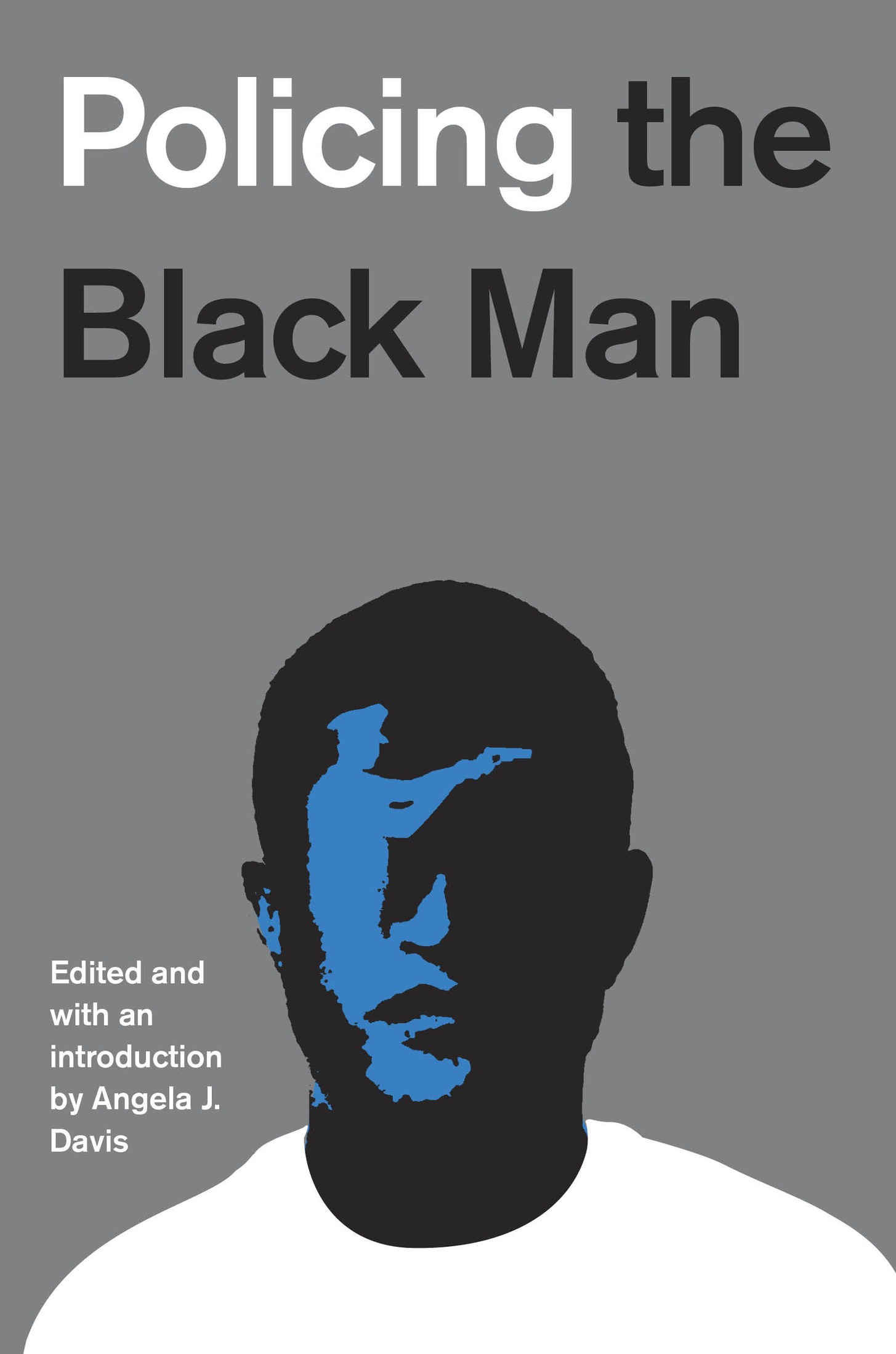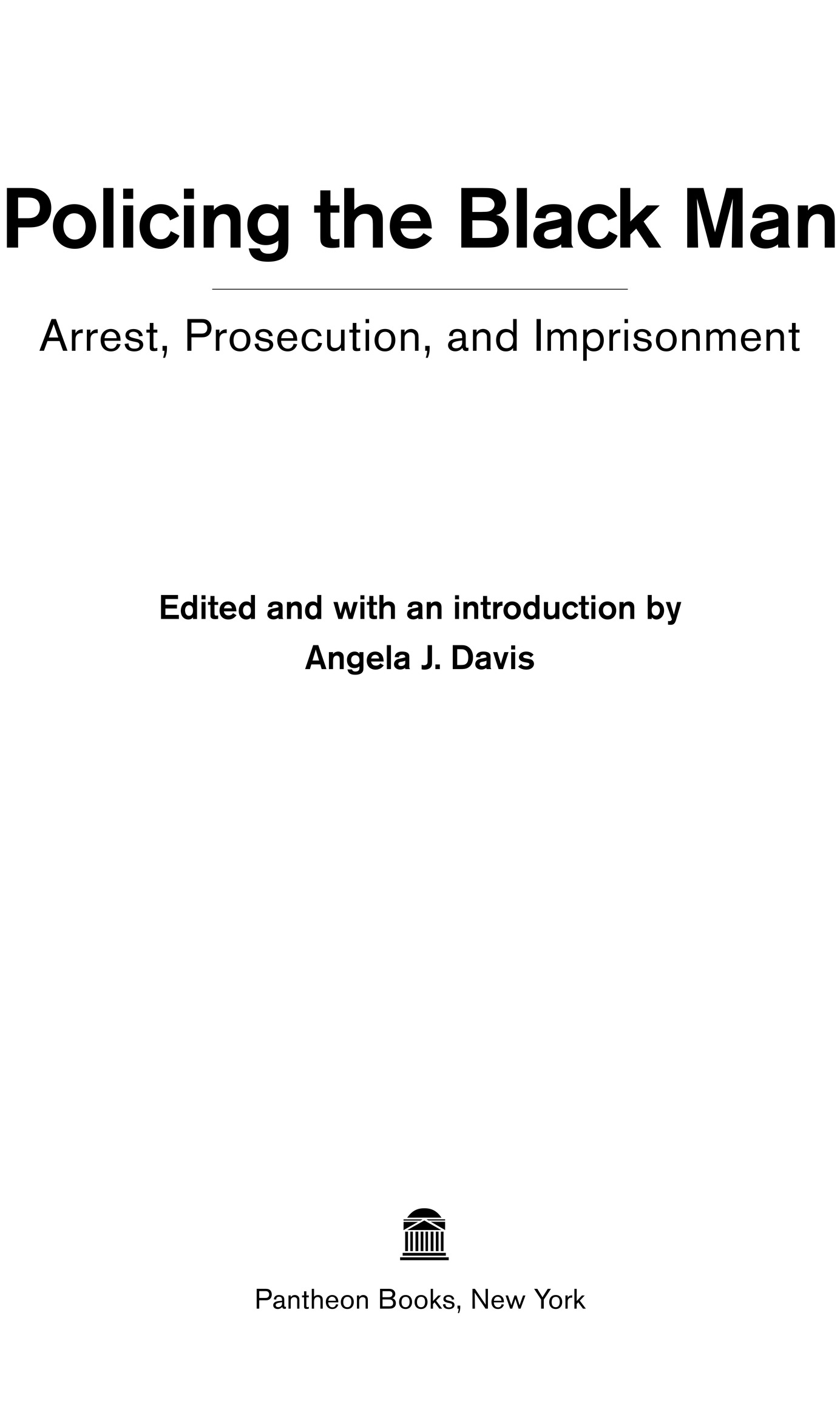Also by Angela J. Davis
Arbitrary Justice: The Power of the American Prosecutor
Criminal Law
(author, with Katheryn Russell-Brown)
Trial Stories
(coeditor, with Michael E. Tigar)
Basic Criminal Procedure
(coauthor, with Stephen A. Saltzburg and Daniel J. Capra)
Compilation copyright 2017 by Angela J. Davis
Introduction copyright 2017 by Angela J. Davis
All rights reserved. Published in the United States by Pantheon Books, a division of Penguin Random House LLC, New York, and distributed in Canada by Random House of Canada, a division of Penguin Random House Canada Limited, Toronto.
Pantheon Books and colophon are registered trademarks of Penguin Random House LLC.
Library of Congress Cataloging-in-Publication Data
Names: Davis, Angela J., [date] editor.
Title: Policing the black man : arrest, prosecution, and imprisonment / edited and with an introduction by Angela J. Davis.
Description: First edition. New York : Pantheon Books, a division of Penguin Random House LLC [2017]. Includes bibliographical references and index.
Identifiers: LCCN 2016055965 (print). LCCN 2017006758 (ebook). ISBN 9781101871270 (hardcover : alk. paper). ISBN 9781101871287 (e-book).
Subjects: LCSH: Discrimination in criminal justice administrationUnited States. African American criminals.
Classification: LCC HV9950 P64 2017 (print). LCC HV9950 (ebook). DDC 364.3/496073dc23.
LC record available at lccn.loc.gov/2016055965
Ebook ISBN9781101871287
www.pantheonbooks.com
Cover design by Oliver Munday
v4.1
ep
Contents
A Presumption of Guilt: The Legacy of Americas History of Racial Injustice
Bryan Stevenson
The Endurance of Racial Disparity in the Criminal Justice System
Marc Mauer
Boys to Men: The Role of Policing in the Socialization of Black Boys
Kristin Henning
Racial Profiling: The Law, the Policy, and the Practice
Rene McDonald Hutchins
Making Implicit Bias Explicit: Black Men and the Police
Katheryn Russell-Brown
Policing: A Model for the Twenty-first Century
Tracy Meares and Tom Tyler
The Prosecution of Black Men:
Angela J. Davis
The Grand Jury and Police Violence Against Black Men
Roger A. Fairfax, Jr.
Elected Prosecutors and Police Accountability
Ronald F. Wright
Do Black Lives Matter to the Courts?
Jin Hee Lee and Sherrilyn A. Ifill
Poverty, Violence, and Black Incarceration
Jeremy Travis and Bruce Western
For the black men in my life, past and presentmy grandfather, Robert L. Harris; my father, Eddie Walter Jordan; and my husband, Howard Neil Davis
Acknowledgments
This book would not have been possible without the hard work and dedication of so many people. I thank Erroll McDonald for his guidance, editorial assistance, and expert advice. I also thank Shawnta Albro, Gabrielle Best Husband, Sheryl Dublin, Layla Medina, Meaghan E. Mixon, and Summer Woods for their outstanding research assistance and Dean Camille A. Nelson and my colleagues at American University Washington College of Law for their support throughout the process. I owe a special debt of gratitude to Randall Kennedy, who generously suggested that I be offered the opportunity to edit this important anthology. Finally, I thank my dear husband, Howard Neil Davis, and all of my family and friends for their love, patience, and encouragement.
I am deeply grateful to Bryan Stevenson, Marc Mauer, Kristin Henning, Rene McDonald Hutchins, Katheryn Russell-Brown, Tracey Meares, Tom Tyler, Roger A. Fairfax, Jr., Ronald F. Wright, Sherrilyn A. Ifill, Jin Hee Lee, Jeremy Travis, and Bruce Western for their extraordinary contributions to this book and for all they do to ensure fairness for poor people and people of color in the criminal justice system. I thank them and the many lawyers, activists, scholars, teachers, and artists who are fighting every day to assure that Black Lives Matter.
Introduction
ANGELA J. DAVIS
Michael Brown, Eric Garner, Tamir Rice, Walter Scott, Freddie Gray, Sam DuBose, Alton Sterling, Philando Castile, and Terence Crutcher are just some of the names on a long list of unarmed black boys and men who were killed by police officers in recent years. Although black men have been the victims of violence at the hands of the state since the time of slavery, technology and social media now permit us to literally bear witness to many of these killings, repeatedly. Millions of people have watched the video of a police officer choking Eric Garner to death as he struggled for air. Similarly, millions have watched the video of a police officer shooting Walter Scott in the back as he ran for his life. Who can ever forget the grainy footage of Tamir Ricethe twelve-year-old boy who was shot by a police officer while he played alone with a toy gun in a park near his home? Two videosone from a police helicopter and another from a police dashboard camerashow Terence Crutcher walking away from police officers with his hands raised high in the air just before he was shot and killed. These images have evoked feelings of fear, sadness, and outrage and serve as a reminder that the lives of black men and boys continue to be devalued and destroyed with impunity at the hands of the state. To date, not one of the police officers who killed these men and boys has been convicted of a single crime.
From the arrival of the first slaves in Jamestown in 1619 to the lynchings of the nineteenth and twentieth centuries to the present dayblack boys and men have been unlawfully killed by those who were sworn to uphold the law and by vigilantes who took the law into their own hands. The National Museum of African American History and Culture, which opened its doors on September 24, 2016, includes exhibits that tell the story of many of these killings. Yet these killings are not just a part of African American history. They have continued well into the twenty-first centuryalmost four hundred years after the beginning of slaveryand persist with remarkable frequency and brutality during a time when America elected its first African American president.
Many of these race-based killings have inspired and reinvigorated movements for change. The brutal killing of fourteen-year-old Emmett Till in Mississippi in 1955, the murder of civil rights activist Medgar Evers in 1963, and the assassination of Martin Luther King in 1968 all serve as markers on the civil rights movement timeline, as did so many other killings of black men by white racists. Each tragic killing sparked nationwide protests and renewed activism in the struggle for civil rights and racial justice in the United States.
The killing of seventeen-year-old Trayvon Martin in 2012 was a pivotal marker of racial violence against black men in the twenty-first century. Martin was killed by George Zimmerman, a white man who called the police when he saw Martin walking in his neighborhood. Zimmerman, a member of a neighborhood crime watch group, reported to the police that Martin looked suspicious and that he looked like he was up to no good or on drugs or something. Ignoring the dispatchers warning that he should not follow Martin, Zimmerman ultimately shot and killed him. Martin was unarmed and was on his way back to his fathers house after buying snacks at a local convenience store. Initially Zimmerman was not even charged with a crime, but after nationwide protests, he was charged with Martins murder. A jury ultimately acquitted him.


